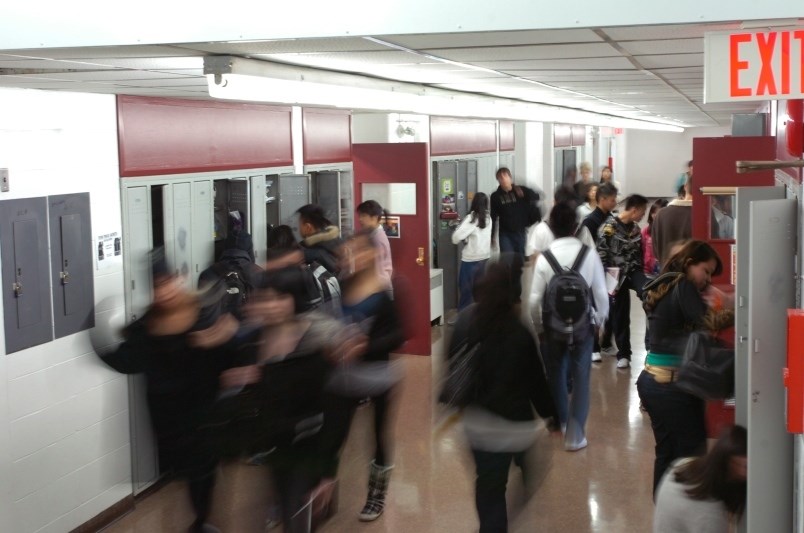Although the government spends $6.6 billion on education and has hired 4,000 new teachers since the teachers’ win in Canada’s Supreme Court, there are still thousands of classes in the province with more than three students with special needs, government statistics released Thursday show.
Vancouver alone has 2,015 classes with more than three students with special needs and 740 classes with more than seven students with special needs.
Despite those numbers, the success of students with special needs is showing a “dramatic leap” with 75 per cent of students with special needs graduating from high school and classes much smaller since the teachers’ court win, said B.C.’s Minister of Education Rob Fleming.
“The addition of 500 special education teachers in the school system, more educational psychologists and 4,000 more teachers overall means more one-on-one time with students,” Fleming said. “I think it’s a good story, especially for new parents enrolling their children in B.C.’s public education system for the first time. They can have a high degree of confidence that, whether their kid has special learning needs or not, there are more services in B.C. schools today than over previous generations. Smaller class sizes benefit every learner.”
B.C. Teachers’ Federation President Teri Mooring said the data shows some improvement to class size, but not in the numbers of students with special needs in each classroom.
“We are concerned that classes are continuing to become more complex,” Mooring said. “That’s been a concern of ours for some time and that concern has not changed.”
Mooring said the extra money now in the education system is a result of the restored contracts, rising enrolment and salary increases.
Choosing to drop these numbers in the last week of July is an interesting strategy – when most teachers are on vacation — and when, as reported earlier this spring, the numbers usually come out in March or April.
This year is different because the teachers’ contract expired June 30 and mediation is underway. Statistics about class composition — the number of students with special needs in each class — are deeply entwined with the negotiations. The two sides are far apart and it’s the issue of class composition that separates them.
Fleming said the delay was because of accuracy.
“It was important to get it right,” Fleming said.
This year there were 19,651 classes in B.C. with four or more students with special needs, up from 17,466 last year, the statistics show. There were 4,183 classes with seven or more students with special needs, up from 3,474 last year.
When rising enrolment is factored in and the numbers are expressed as a percentage of all classes, the classes with four or more students with special needs rose from 23 per cent of all classes to 26 per cent, while the classes with seven or more students with special needs stayed the same at five per cent.
The number of classrooms supported by an education assistant — a trained support worker for students with special needs who is not a teacher — rose by 2,000, the statistics show.
There are no province-wide rules about the number of special needs students that can be in any one class. If provincial rules are implemented, school districts like Vancouver, where there is robust contract language about class size and class composition, could lose out, while districts without any rules could come out ahead.
A controversial report released in December called for some of the funding for students with special needs to be allocated using a prevalence model — the expected number of students with special needs — rather than funding specific students. The money would be evenly spread throughout the province.
Earlier this year, the government put the planned change on hold, pending more consultation. Contract negotiations have complicated the issue further.
On that note, the rate of students on the Autism spectrum has increased from 0.2 per cent in 2001-02 to 1.9 per cent of all students today, the government says. The rise in students with Autism, learning disabilities and serious mental illness contribute to an overall rise in the number of students with special needs, as does the rise in enrolment, the government says. Overall, about 11.4 per cent of B.C. students have a diagnosed special need, a rate that is relatively stable, but slightly up from 11 per cent last year.
Both Fleming and Mooring said they are hopeful a deal will be reached by September. Mediation sessions are planned throughout August.
Let’s hope they’re able to reach a deal that benefits all students, including those with special needs.



